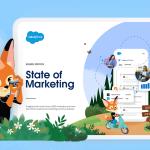Why do technology projects not always live up to expectations? In many cases, it comes down to adoption by the people who have to use the systems once they implement them.
One article by Rand Group states: “It’s estimated that up to 70% of technology projects fail to deliver their desired results. In part, that’s due to poor user adoption. Just because you build it, doesn’t mean they will use it.”
Personally, I’ve worked with many companies in the UK and the implementation of almost any software can cause a great deal of agita if the implementation isn’t well designed – and the company hasn’t planned for the user experience.
Ultimately, end-users don’t usually embrace changes. And when the systems are complex or the companies haven’t made a case as to why the software is needed, end-users have a tendency to simply ignore the new software and keep doing what they’ve always been doing.
Five areas to focus on for improved user adoption
So what are some key things companies need to do to make sure that end-users don’t scupper the system and kill your proposed ROI? Here are five areas to focus on:
- From day one, engage the end users and explain why the new system is being developed and what the system does for each persona.
- Develop a comprehensive training program which not only explains the IT system but also the modified business process that’s associated with the new software.
- Constantly engage the end users to secure their feedback for improvements and prioritise these enhancements.
- Have an easy way for people to get support, and consider creating power users who use the system daily for their job, but are on hand to help colleagues.
- The most important item is to communicate clearly to each person using the system what’s in it for them. Is it getting better results? faster resolutions to problems? Whatever it is, make sure it’s known about.
Finally, celebrate milestones and successes with every single end-user. Buy-in is a continual process, not a one-time deal.
What happens if you don’t?
Let me give you an example here.
A company I worked with wanted to make their systems easier for everyone across the company to use so that the executives could easily create reports on the sales progress.
Unfortunately, the company didn’t think through the implementation process, and didn’t realise that the way it was set up didn’t make the end-user life easier – it added incredible amounts of administrative complexity. As a result, people kept using Excel to keep track of their forecasting – and the hoped-for reporting didn’t materialise.
Fortunately, with some training and support, and a fairly simple system modification, the implementation was shortly up and running and now everyone sees the reports they need – when they need it. The ROI on this system has been great, but in the beginning, the lack of adoption nearly toppled it.
One more tip…
Finally, I encourage businesses to measure adoption by persona, because some people only access the systems at certain times. And remember, end-user adoption happens when you get everyone on board. Salesforce has a great article on the carrot vs. stick approach when looking at adoption methods.
Adoption is critical – and getting it right from the start improves your chances of success and quickly drives a valuable set of data in the system.
For more information on adoption practices, visit Success Cloud’s “Getting Started” and get your adoption plan going now.

























